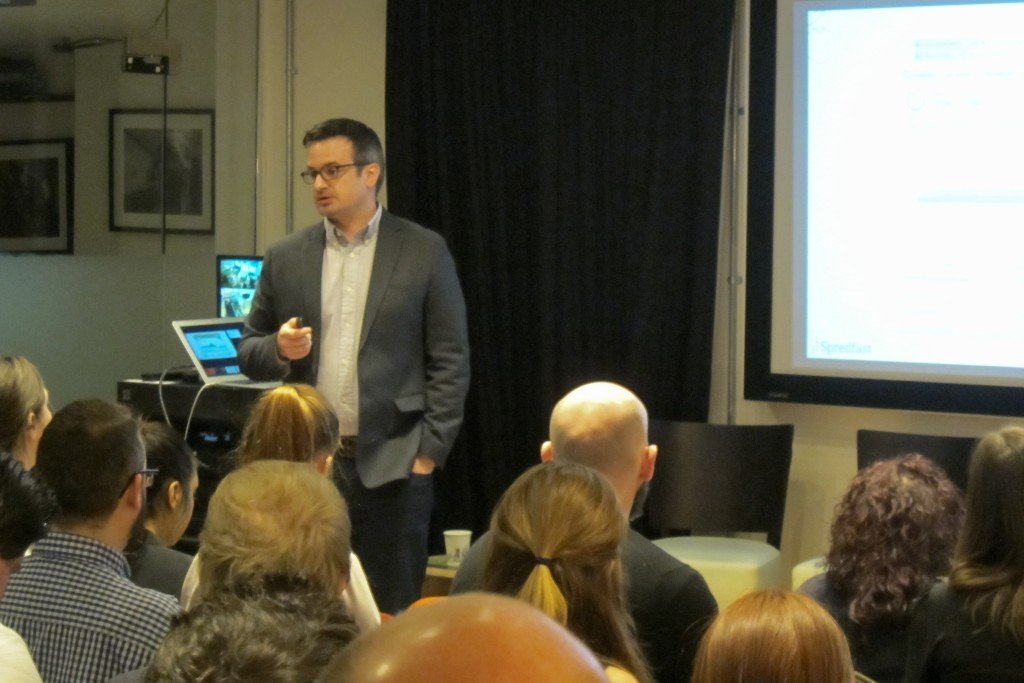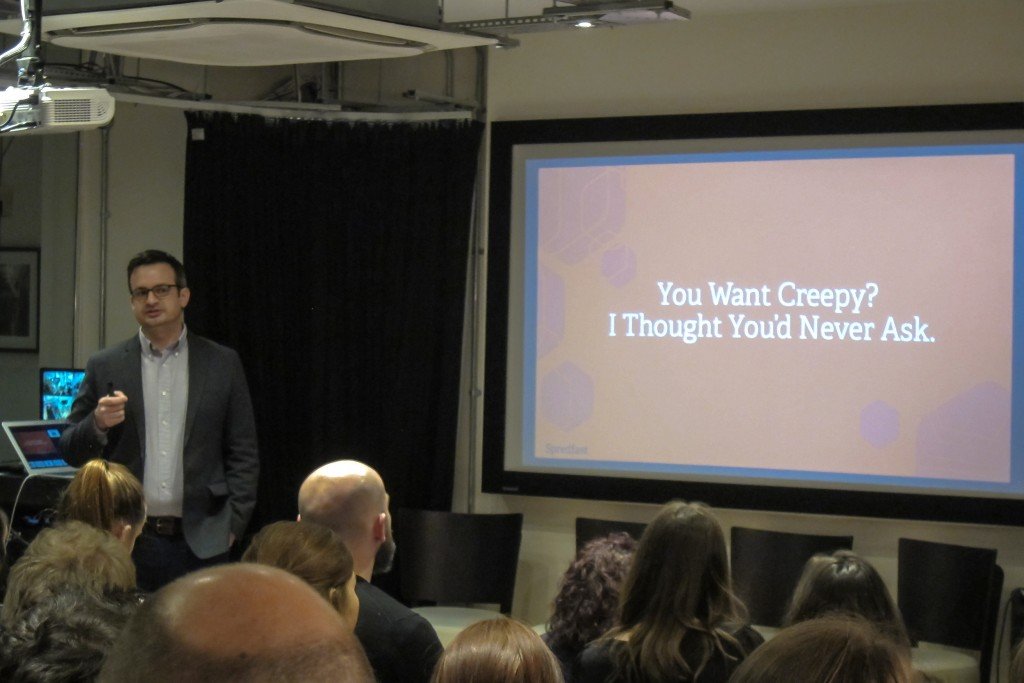April 25, 2016
At IF, we pride ourselves on evolving. Curiosity is one of our brand values, championed daily by our fabulous staff. Our event format has been well received for many years but it was time to evolve. After a few months of planning and tinkering, all was revealed.
A key note speaker of acclaim. A panel packed with some of industries brightest and best known social media minds and in excess of 75 leading brands in attendance to watch all unfold.
Partnering with our good friends, Spredfast, we drilled into the questions of ‘how close is too close for social customer relationships?’
For several years now, possibly since Coca-Cola’s innovative bottle personalisation campaign, brands have been searching for ways to personalise and yield the compelling results available. Digital channels, given their accessibility, are spoken about as the channels best placed to connect with customers. This does however raise a few (valid) questions:
- How should we use data?
- Is there such a thing as too much data?
- Are 1-2-1 customer relationships the way forward?
- Is it even possible if our customers are having tens of thousands of conversations per week?
- Are 1-2-1 conversations for customer services only?
And many more, but you get the gist.
First up was our key note speaker, Chris Kerns, author of Trendology and VP, Research & Insights at Spredfast. Having flown in from the States, Chris set about grabbing our attention with a few killer stats: “93% of all content created in 2015 was 1:1; published content and direct replies to complaints and questions. In the airline industry, 98% of all tweets in 2015 were 1:1”

Ok, so we’re just five-minutes in and we’ve confirmed 1:1 marketing is key. So, there we have it, in answer to “how close is too close?” it turns out we can’t get close enough. I’ll get my coat.
Clearly I (and the rest of the attendees) didn’t. Drawn in by Chris, we wanted to see what he was serving next. Not one to disappoint, Chris offered a simple but clever example of how to use data, taken from the ongoing US Presidential Election. Having analysed conversations, Chris (and Spredfast) were able to evidence how social media messages containing America received significantly fewer engagements than those written with United States of America. The results were quite compelling. Surely, campaign managers, if they had this data available to them, would have instructed their politicians (and PRs) to cease writing copy referring to their proud country as America. A simple copy change yields greater engagement and trust – that’s winning votes!
It certainly got the IF team thinking how simple analysis of a brands BAU copy could reveal equally important insights to act upon.
For the next thirty-minutes, Chris spoke about what we at IF have known for a long time, data analysis is critical, but it’s about far more than just procuring a potent tool. You need smart minds using it, drawing the potent data to form business-impactful insight.
Chris’ dialogue also crossed (entertainingly) into the realm of ‘big brother’.

Data as we all know, can go too far. Marketers are all aware of this, so we were afforded a few minutes of laughter at just how creepy and OTT we could get. Using Olympic athletes as an example, he showed us how alarmingly easy it was to marry the data dots of their geolocation whilst monitoring what they were saying online and doing in real life just by accessing data openly available to everyone.
There was a valid point beyond making a room of marketers laugh – bombing this conversation with irrelevant or tenuous linked messages would not gain any cut-through. If you’re one of the few marketers who is actually doing this, then stop. You’re an embarrassment to industry. There, I said it.
Receiving much applause, Chris departs, being replaced by our brilliant panel:
Jim Millen, Digital Content Editor, Fujitsu
Rachel Kneen, Social Media Manager, O2
Kate Dale, Strategic Lead: Brand and Digital, Sport England
Selena Harington, Head of Consumer Marketing, UK & Ireland, Microsoft

Unfortunately, we can’t publish all the Q&As in a blog post, so we’ve selected a few that showcase the brilliant conversation had and learnings taken away by our attendees:
Q: Do customers care that you’re on social?
A: Jim: “I think customers do very much care. It’s really important that what we do in social reflects that relationship”
A: Kate: “Definitely. Creating an emotional connection is really important. That 1:1 personalisation and connection takes it to the next level. For This Girl Can, the tone of voice was really sensitive, we have to be careful with what we say and what we don’t say.”
Q: What skills do you need within marketing? How does outward bound activity become more personal?
Rachel: “The key is data. I don’t think enough brands analyse their data enough. You’ve got to get the balance right. Do I create a campaign with 100 different audiences and assets, or do I focus on specific audiences? We have over 10,000 conversations a week, so it’s about creating the content and conversations that will efficiently connect with the majority.”
Jim: “In B2B it has to be a lot more structured. We have to understand what the customer needs and who they are. It’s about understanding what the customers are saying to specific groups in our company. There is data, but to understand it, we also have to understand what’s being said face to face as well.”
Q: We’ve talked about one-sided personalisation, what about UGC?
Kate: “This Girl Can is big on personalised content and UGC. Engagement was at about 12% for UGC and our own content at around 25% engagement. UGC is about rewarding and acknowledging for us, not about engaging new audiences. We use a mix of high quality content and UGC.
Rachel: At O2, recently we had an advert come out where we created social versions of the ad instead of just showing it on social. We create three different versions of the ad for three different audiences. We landed the key message in the first 10 seconds. Just by doing that, results were incredible. We want to be as personal as possible…”
Attendees observed around 20 Q&As before the tables were turned and the panel started asking questions of our audience. With questions asked of ASOS, British Gas and England Rugby, to name a few.
In summary, personalisation is here to stay. It’s now about having smaller, closer and more relevant conversations with customers and then replicating that at scale. AT IF, we call this relevancy at scale.
The digital landscape possess exciting times for marketers. Hopefully last week’s session acted to inspire new direction or confirm that the road you’re on is the right one.